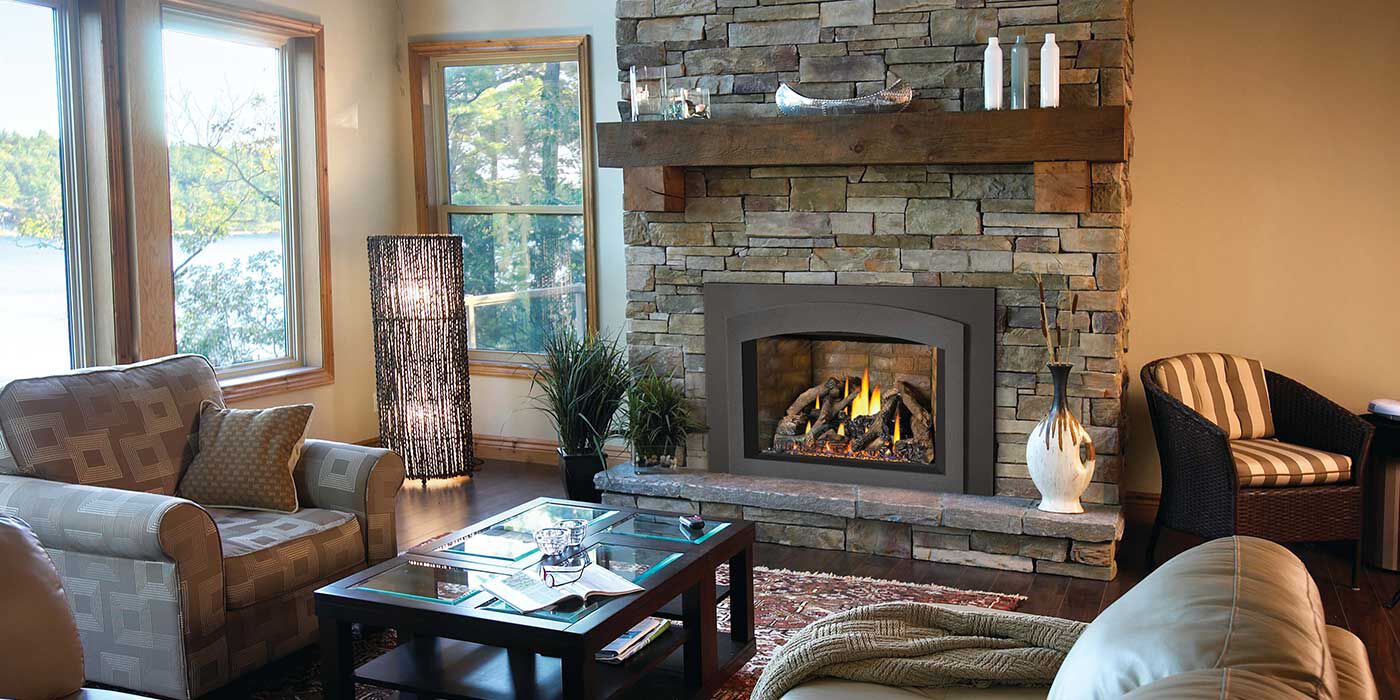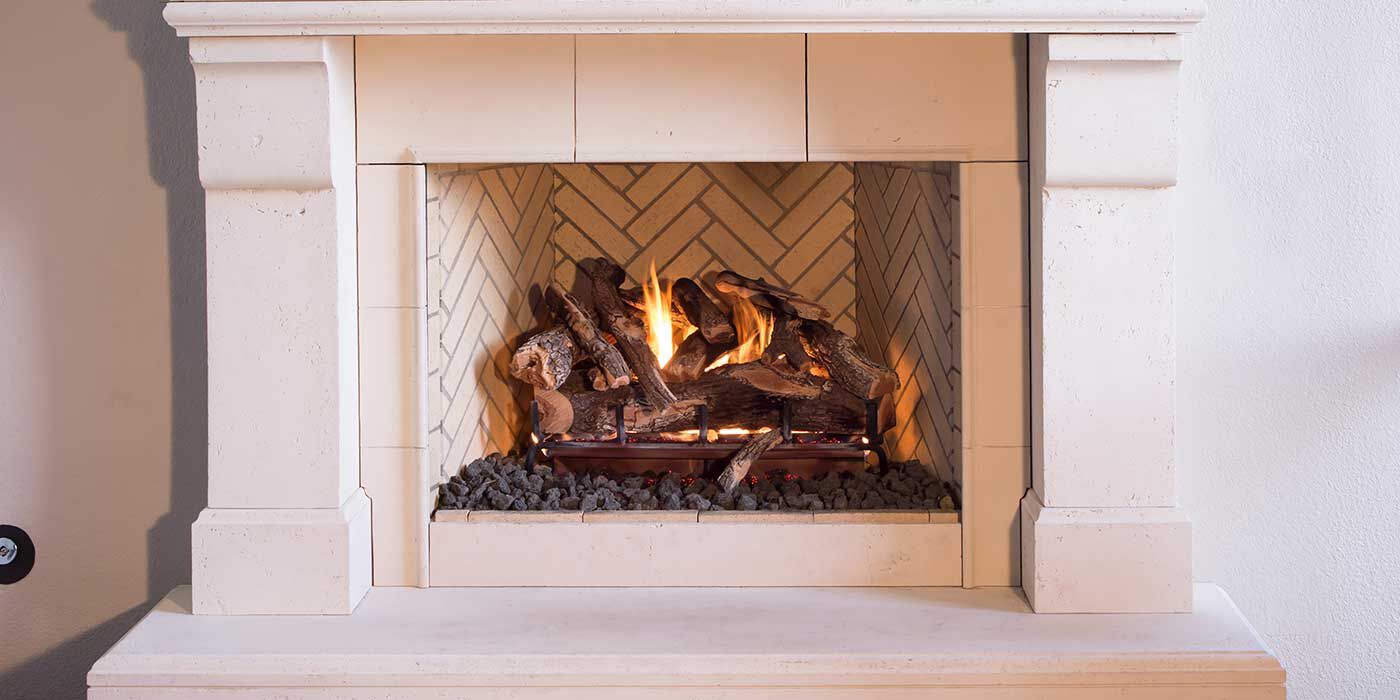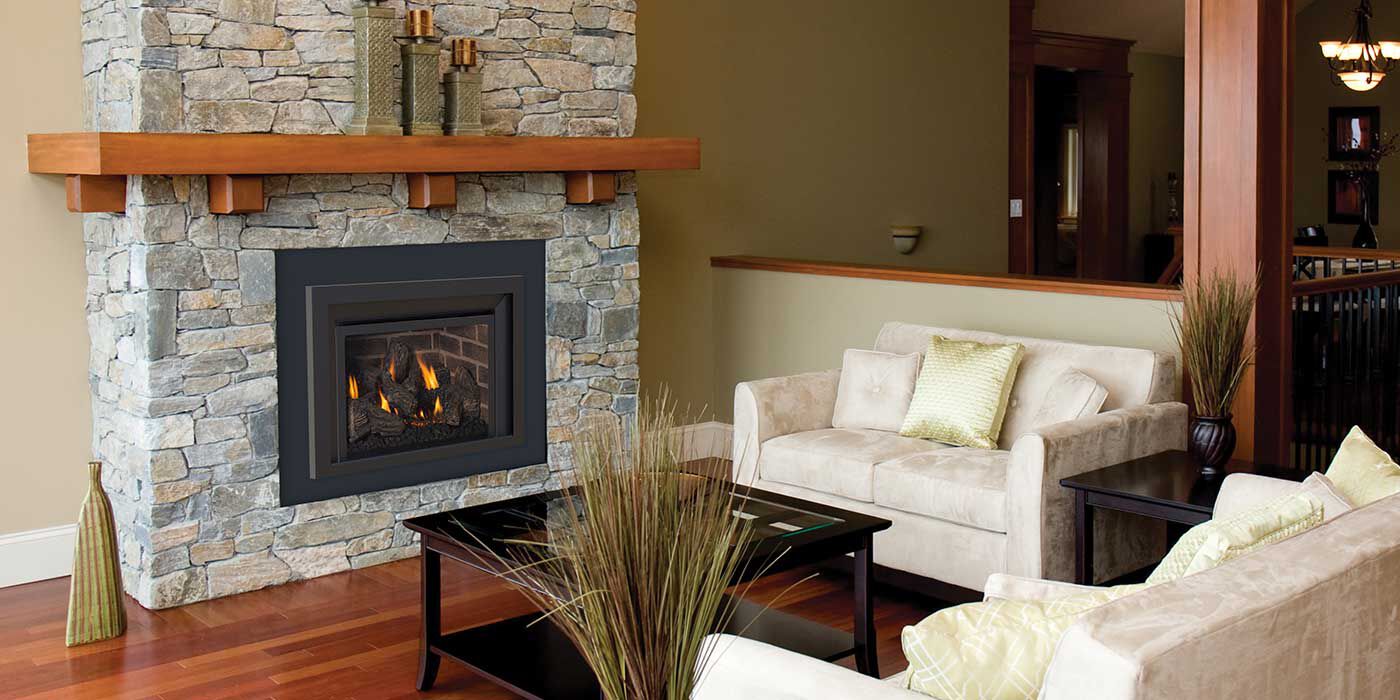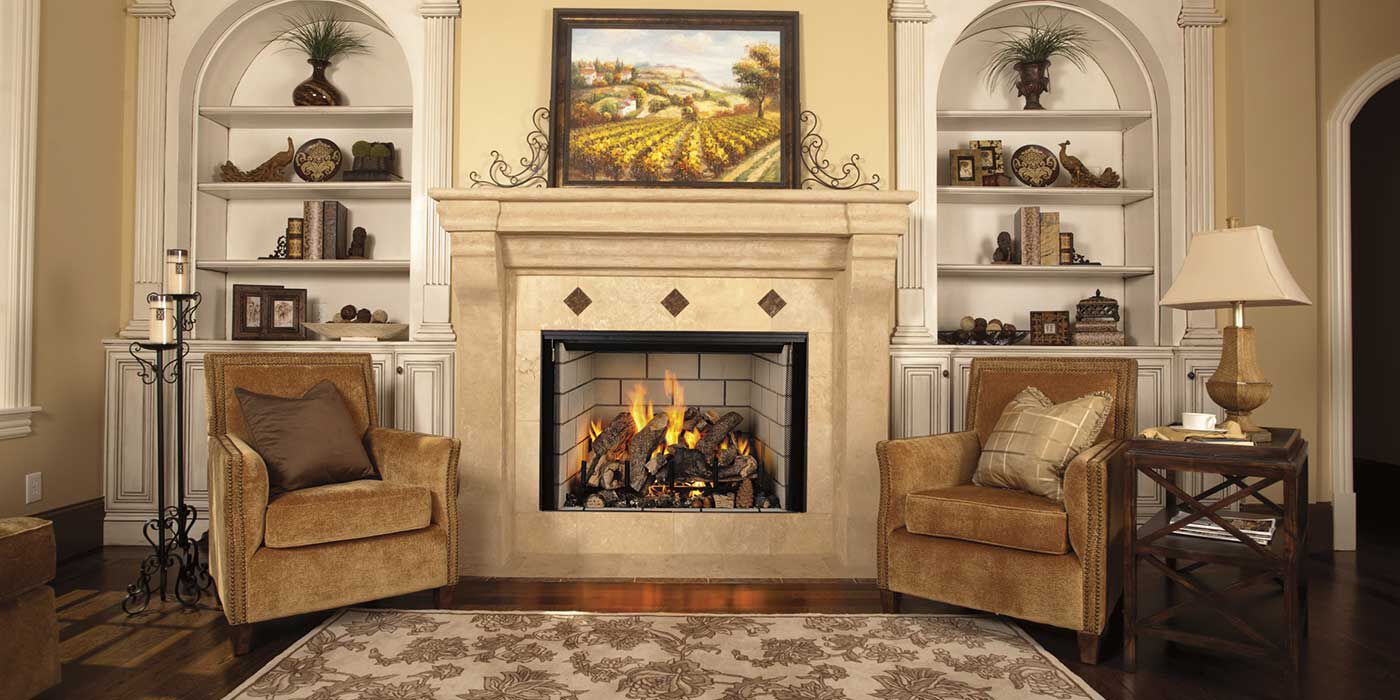By: Tom Regis, NFI Certified Master Hearth Professional
Last Updated: October 9, 2025
While most homeowners love the idea of having a cozy fireplace to curl up next to, some may want to avoid the effort it takes to build and maintain wood burning fires.
Fortunately, there are two easy ways to convert a traditional wood burning fireplace to gas — gas log sets and gas fireplace inserts. Converting your wood fireplace to gas creates a modern, low-maintenance focal point that boosts your property value, keeps your space comfortable in every season, and adds incredible ambiance.
Follow this simple guide to learn the key differences between gas log sets and gas inserts, so you can find the best way to revamp your fireplace.
What Are Gas Logs?
Gas log sets are a set of ceramic logs and a burner system that sits inside your fireplace. They act as a realistic replacement for authentic wood logs.
Some sets are even cast from real wood and hand-painted to bring out the textures and colors found in natural tree bark.
Available in a variety of sizes and styles, like Birch, Oak, Driftwood, and Juniper, gas log sets are affordable, easy to operate, and won’t require much upkeep.
Most gas logs are made of ceramic fiber or a refractory cement mixture that withstands extreme temperatures. Some logs also have steel reinforcement rods inserted in the center for extra strength.
There are two different types of gas logs — Vented and Ventless. Vented logs are designed for fireplaces with existing chimneys, while Ventless logs don't need to be vented to the outside.
Overall, Vented gas logs offer a more realistic look than Ventless sets. However, Ventless gas logs have a more efficient heat output.
For a more in-depth look at the differences between the two gas log types, check out this guide.
What Are Gas Fireplace Inserts?
Gas fireplace inserts are an effective way to modernize an old, wood fireplace, while increasing heating efficiency and reducing your carbon footprint.
Gas inserts are designed to fit inside existing fireplace openings. They’re essentially metal boxes that are “inserted” into the fireplace and finished with a decorative surround.
Gas inserts come in both Direct Vent and Ventless models. For vented fireplace inserts, you’ll need a fireplace with a working chimney, flue, and damper. Ventless inserts require an existing fireplace, but no venting system of any kind.
Keep in mind, Ventless inserts aren’t permitted in all localities. Before using any Ventless gas product, be sure to check your city’s laws and restrictions regarding gas appliances.
Aesthetic, Heat, & Budget
When choosing between a gas log set and gas insert, consider these questions:
- What do I want my burning display to look like?
- Do I need a lot of heat?
- How much money do I want to spend?
Gas logs are used more for looks and aesthetics than warmth. They still create some heat, but their main purpose is to replicate a real wood fire.
Gas inserts also provide a newly finished front for your existing fireplace and cover up old firebrick liners. They typically use less gas than a log set and are great for supplemental heating, especially if you live in an area with harsh winters. Upgrading your fireplace with a gas insert can help you save a lot of money on your heating bills!
As far as the budget goes, you can expect to spend more on a gas insert. Installation will take a bit longer, too. In comparison, gas log sets are affordable and easy to set up yourself.
Keep in mind, both gas inserts and gas log sets need to connect to a gas line. If you don’t have one already, you’ll need to have a licensed hearth professional install one.
Some log sets and inserts also have blowers, fans, and electronic ignitions. In this case, you’ll also need an electrician to install an electrical connection.
Prefer to Listen?
FAQs
The size depends on the dimensions of your firebox. Measure the height, width, and depth of your fireplace before shopping. Choosing the right size ensures the logs look realistic and your burner system works efficiently.
Yes, we recommend hiring an NFI Certified Master Hearth Professional to install and service any gas fire feature — from gas fireplaces to gas logs, gas fireplace inserts, gas fire pits, and more. Working with any kind of gas appliances can be dangerous and there are serious safely risks if you aren’t experienced.
Many gas log sets are compatible with both propane gas and natural gas. Be sure to select a set that matches your home's gas line type. Some logs are designed specifically for one fuel type, so it’s important to check the manufacturer’s specifications before purchase.
Yes! Modern gas inserts are very energy efficient, often converting 70–90% of fuel into usable heat. Direct vent models are especially clean-burning and cost-effective, helping reduce heating costs compared to wood fires.
Most gas inserts offer remote controls, wall switches, or smart thermostats for ease of use. Some models even let you adjust the flame height, blower speed, and heat output (BTUs) with the push of a button.
We’re Here to Help
Do you have more questions about gas logs or gas inserts? Call and speak with an NFI Certified Master Hearth Professional today at 800.919.1904.
More Resources
Install your gas log set safely and efficiently with this step-by-step guide.
Check out our best-selling gas fireplace inserts to narrow down your options.
Explore six reasons gas log sets make great alternatives to wood fireplaces.
 |
Thomas Regis has been a Technical Sales Representative at Woodland Direct for four years. An NFI-Certified expert, Thomas effortlessly directs his clients toward the perfect products, offering essential installation and safety advice. He's tackled projects of all sizes, from backyard fire pits to custom indoor fireplaces. He has even helped Amy Adams, owner of the Tennessee Titans, find a new fireplace for her home! Beyond his professional achievements, Thomas actively participates in community service projects and enjoys spending time on the basketball court. Call him or one of our experts in fire at 800.919.1904. |



